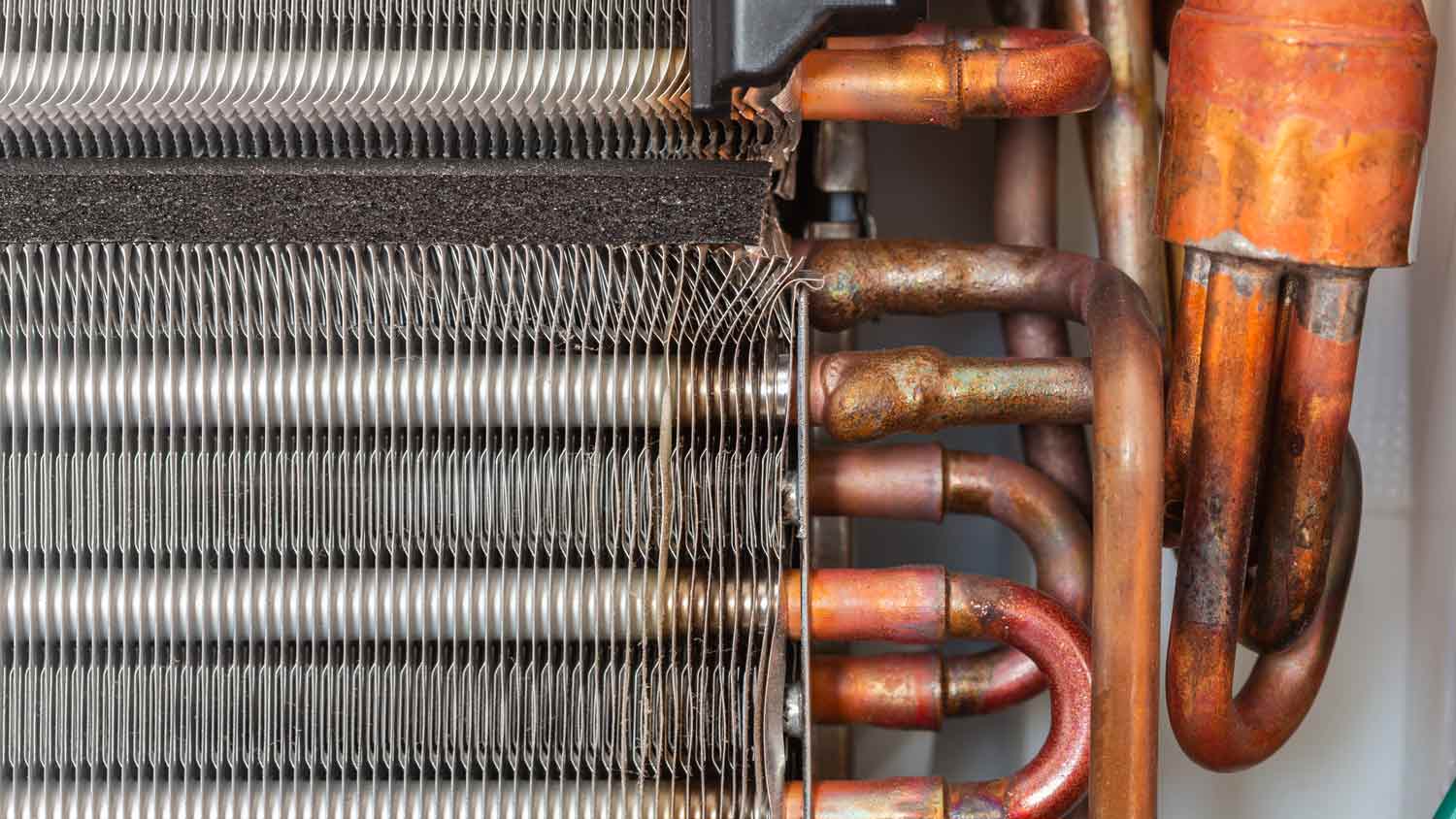
What you’ll pay in Columbus, OH, for furnace repairs depends on many factors. Here’s a breakdown of what can go wrong and the cost to fix those issues.
Compare and contrast the coils in your HVAC system


Evaporator coils absorb indoor heat, while condenser coils release it outdoors, completing the cooling cycle.
Evaporator coils are indoors near the blower fan, while condenser coils are situated outdoors within the outdoor unit.
Evaporator coils require regular cleaning to maintain airflow and cooling efficiency.
Condenser coils need even more frequent cleaning due to outdoor exposure.
Condenser coils and evaporator coils are two essential components of HVAC systems that serve distinct yet complementary functions. Understanding the difference between an evaporator coil vs. condenser coil is key for optimizing your system’s performance and troubleshooting issues with the help of a local HVAC repair technician. Let’s explore the differences that define these two crucial parts of your HVAC system.

| Type of Difference | Evaporator Coils | Condenser Coils |
|---|---|---|
| Design | Compact coil | Coil with metal fins |
| Location | Indoors | Outdoors |
| Function | Absorb heat indoors | Send heat outside |
| Size | Smaller | Larger |
| Maintenance Needs | Regular cleaning | Frequent cleaning |
| Cost | $550–$1,100 | $900–$2,800 |
So, what is an evaporator coil and how does it differ from a condenser coil? An AC evaporator coil is designed to absorb heat and humidity from the surrounding environment. In contrast, the condenser coil works to release the heat absorbed from indoor air to the outdoor environment, completing the cooling cycle.
To absorb the heat from indoor air, the evaporator coil allows refrigerant to evaporate into a low-pressure gas state as it absorbs heat from passing air. This absorption of heat results in cooler air being circulated throughout the living space. Additionally, the evaporator coil plays a crucial role in dehumidification, condensing moisture from the air onto its surface as the refrigerant evaporates, contributing to a cool and comfortable indoor environment.
The condenser coil receives hot, high-pressure refrigerant gas from the compressor. As the refrigerant flows through the condenser coil, it undergoes a phase change, condensing into a liquid state and releasing heat into the surrounding outdoor air. This process allows the refrigerant to transition from a high-pressure gas to a liquid, preparing it for recirculation back into the evaporator coil to continue the cooling cycle.
The evaporator coil is typically situated indoors, housed with the air handler or furnace of the HVAC system. Its indoor placement allows it to be positioned near the blower fan, which draws warm air from inside of the building through the return ducts. This helps enable efficient circulation of indoor air over the coil for heat absorption.
In contrast, the condenser coil is located outdoors, placed within the outdoor unit of split types of air conditioner systems. Exposed to the outdoors, it can easily release heat into the surrounding air, which is essential to the cooling process. Having the condenser coil outdoors also helps prevent the buildup of hot air within the indoor living space.

It’s crucial to keep both your evaporator coil and your condenser coil clean to maintain the efficiency of your HVAC system and prevent breakdowns and malfunctions. You can learn how to clean your AC coils yourself or invest in the cost of a professional AC coil cleaning to ensure your coils stay clean and free of debris.
Evaporator coils require regular cleaning to prevent problems from blocked airflow and reduced cooling efficiency. For example, a dirty evaporator coil is a possible cause for a heat pump freezing up, so it’s important to ensure it stays clean. On the other hand, maintenance of outdoor condenser coils should happen more frequently, as they’re exposed to outdoor elements and more prone to accumulating dirt and debris.
Condenser coils are typically more expensive than evaporator coils. Replacing an evaporator coil costs anywhere from $550 to $1,100, while condenser coils usually cost between $900 and $2,800 to replace.
From average costs to expert advice, get all the answers you need to get your job done.

What you’ll pay in Columbus, OH, for furnace repairs depends on many factors. Here’s a breakdown of what can go wrong and the cost to fix those issues.

If you’re having problems with your air conditioner’s condenser, it may be time for an upgrade. Learn about the cost to replace an AC condenser in this guide.

The cost of boiler repair depends on the specific issue. Read our expert guide, which breaks down boiler service costs so you can budget accordingly.

Even when you're sweating up a storm on a hot day, your AC should keep its cool. Here's what to do when condensation on your AC signals larger problems.

Are you considering adding a whole-house humidifier to your home? Keep reading to learn the pros and cons of a whole-house humidifier.

Not sure who to hire to install radiant floor heating? Learn which pros handle radiant floor heating installation and how the work comes together.